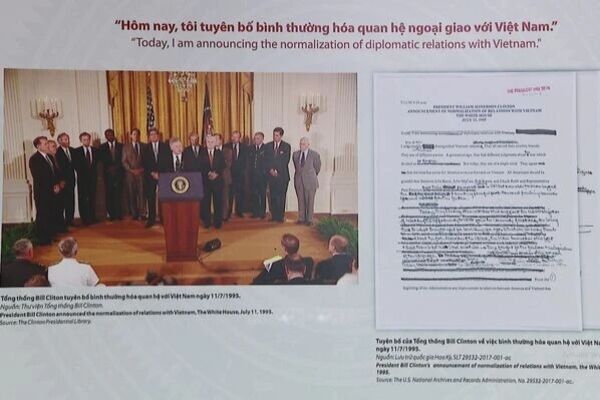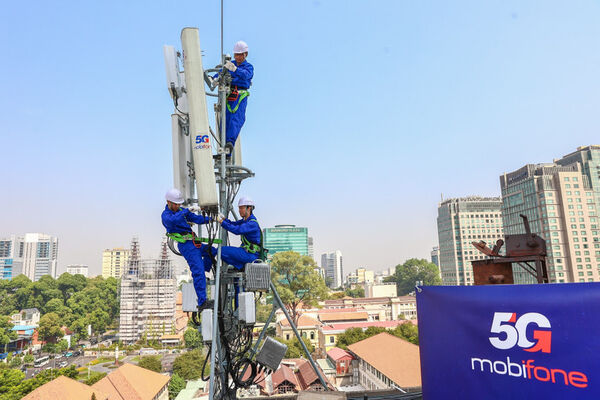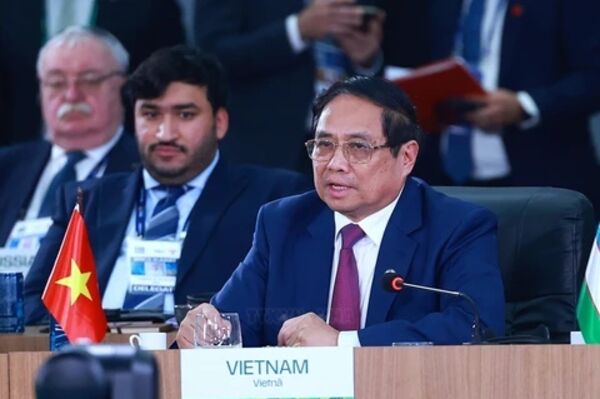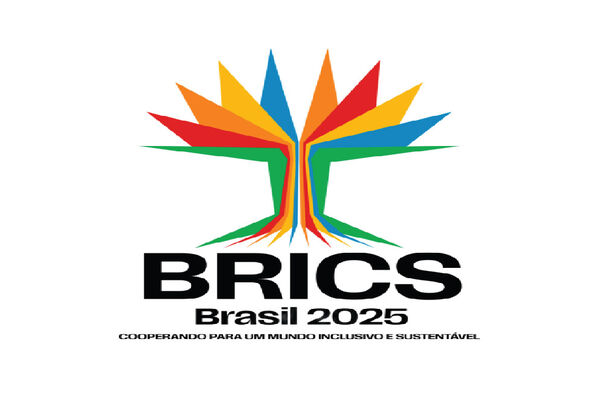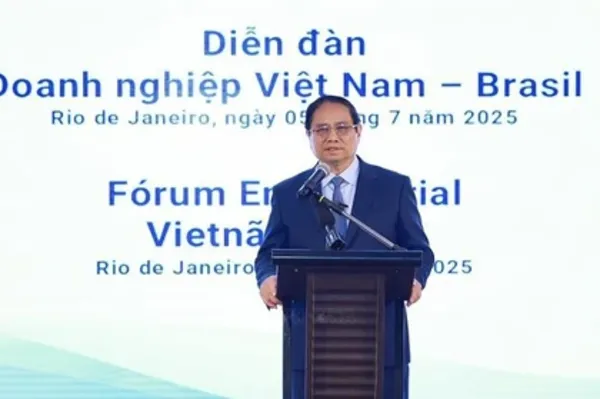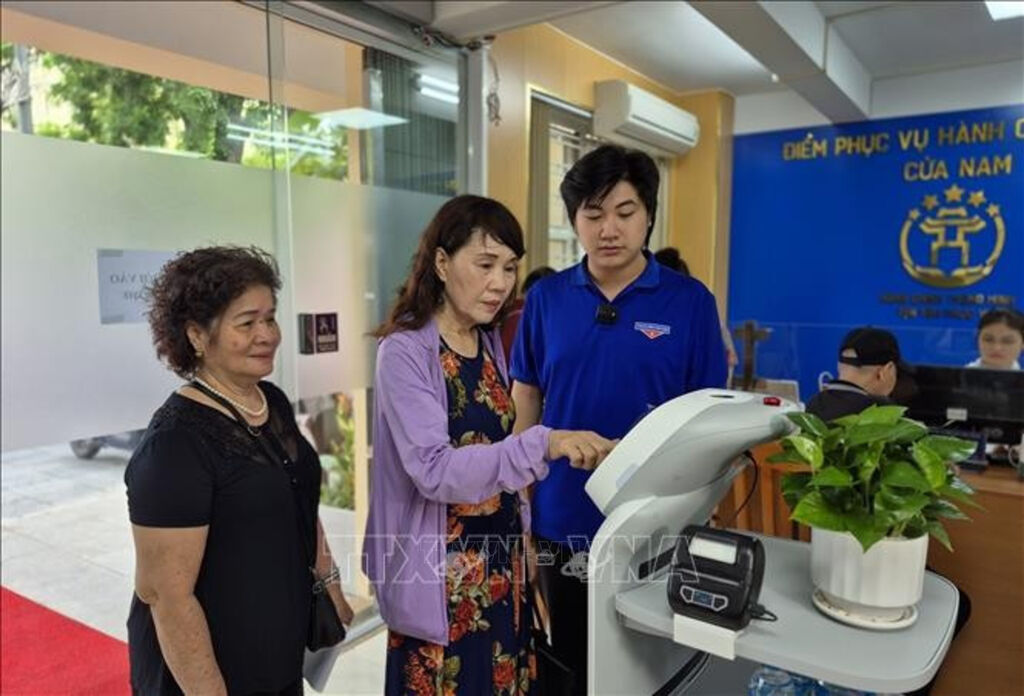 |
| Citizens use AI-powered robot at the Cua Nam ward public service centre. (Photo: VNA) |
Hanoi (VNA) – Hanoi’s Cua Nam ward has become a pioneer in applying artificial intelligence (AI) to public administration by launching an AI-powered robot to assist residents with administrative procedures.
The move comes just ten days after Hanoi officially began operating the new two-tier local government model, in line with a nationwide shift on July 1. Initial feedback indicates smooth operations, with faster service delivery and greater satisfaction among citizens and businesses.
Trinh Ngoc Tram, Vice Chairwoman of the Cua Nam ward People’s Committee, said the AI robot is part of a pilot programme designed to automate guidance and support for public service users.
After the trial period, the ward will assess the robot’s effectiveness and propose improvements to better serve local residents, she said.
At the Cua Nam public service centre, the robot has quickly become a highlight. Visitors are greeted by professional civil servants, and now, also by a robot offering drinks, answering questions, and guiding them through administrative procedures.
Pham Thi Pho, a local from Tho Nhuom Street, expressed surprise and delight. “I never expected to see a robot here. It’s like the ward just hired a very modern and efficient new employee,” she said.
Nguyen Lan Huong, another resident from Ham Long Street, was so impressed by the presence of the robot. She recorded a video of the robot and sent it to her son.
“It’s amazing to see such technology used in everyday services,” she said.
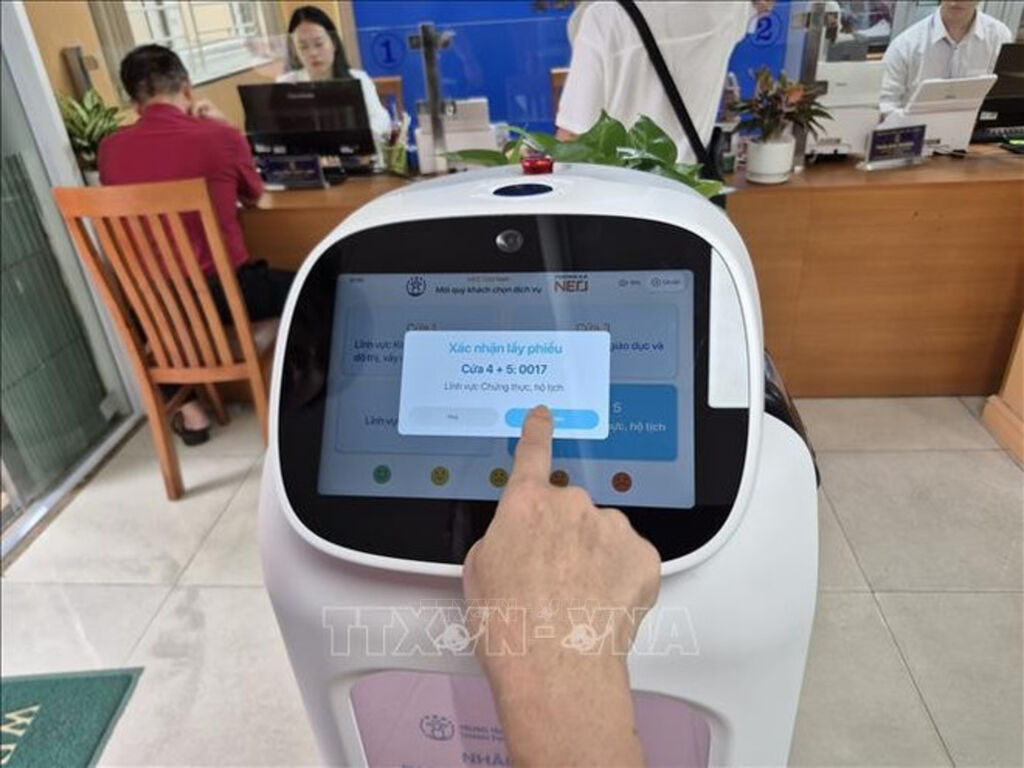 |
| It's easy for people to use the robot. (Photo: VNA) |
The robot, equipped with a 21.5-inch screen, displays queue numbers, estimated wait times, service counters, and QR codes for accessing digital services. It guides users via touchscreen and voice, automatically prints queue tickets, and directs users to the appropriate waiting area.
Using SLAM (Simultaneous localisation and mapping) navigation and AI technology, the robot can move around the waiting area, serve drinks and snacks, play soothing music, and even engage in simple conversation to enhance the visitor experience. It also collects service feedback from citizens via its touch screen and transmits the data in real time to local authorities.
More importantly, the AI technology enables the robot to understand and classify requests, then guide users to the right counter - a feature especially helpful for elderly citizens. It can be summoned to specific spots and provide detailed instructions on paperwork or connect users with officials for more complex queries.
The introduction of AI robots marks a key step in Hanoi’s efforts to streamline administrative processes, modernise public services, and build a more citizen-friendly government. As digital transformation accelerates nationwide, the success of this model could pave the way for broader adoption in other localities./.
